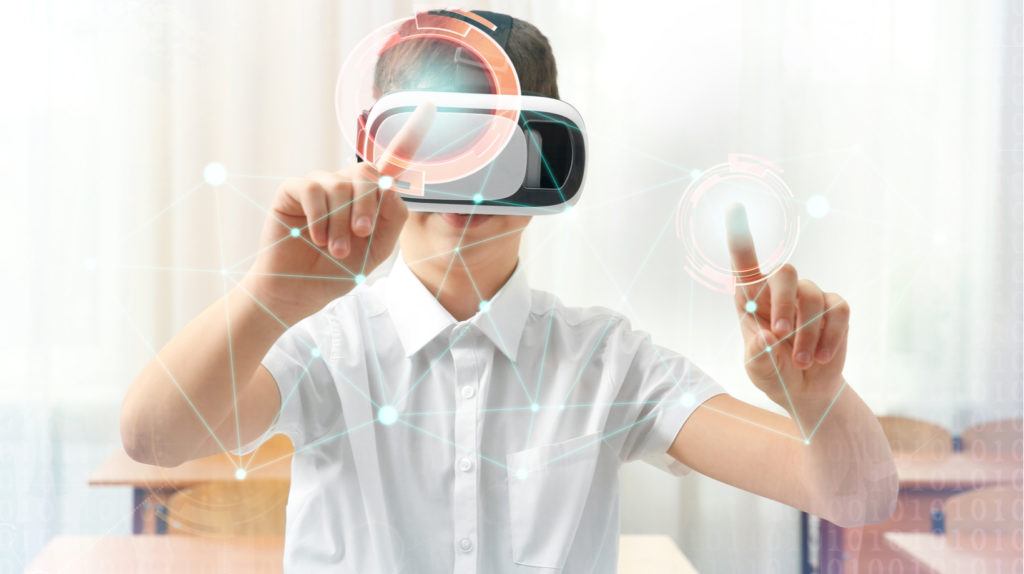I have shared with you some interesting information about the future of technology in education:

Research by the World Economic Forum estimates that 65% of elementary school children will find themselves in occupations that do not exist today. Isn’t it scary?
Nowadays, soft skills are more valuable than skilled skills for one reason: everything changes so fast that you can adapt to changing circumstances, learn new trends constantly, think regularly and be active – These are skills that are usually now most valued.
At the same time, 90% of firms currently lack IT skills, while 75% of teachers and students find that there is a gap in the ability of IT staff to meet their skill requirements. To create the talent needed for the digital economy, education needs to adapt rapidly as the demand for IT skills grows and develops.
Technology has expanded access to education and has given teenagers plenty of opportunities to start their own businesses before turning on 18 codes to learn how to code how they code their own websites How to create and start your own business. Also, all the information you need is now available online and you have an online forum, where you can actually seek the advice of professionals, get access to case studies and start self-education.
In the Middle Ages, books were scarce and educational opportunities existed only among the higher classes. People had to travel to education centres to get an education. Today, a lot of information is available at one’s fingertips through the Internet. Through technology, communication and collaboration opportunities have also been expanded. Classroom walls are no longer a barrier as technology enables new ways of learning, communication and working in a collaborative way.
Now, students can follow an expedition of scientists in the field, learn about the Arctic, read scientists’ blog posts, watch pictures of scientists, e-mail questions, and even videos Can directly talk to scientists through the conference. Students can collaborate on group projects using technology-based tools such as Google Docs, Trello, and more.
In the traditional classroom, teachers are the primary source of information and students pass it. This model of the teacher has been in education for a long time and it is still in evidence today. However, due to the access to information and educational opportunities that technology has enabled, in many classrooms today we shift the role of the teacher to a “side guide” as students use their own learning using technology to gather relevant information Take more responsibility for Schools and universities across the country have begun to redesign these new models to enable learning, further interaction and small group work, and to use technology as an enabler.
🎓 The future of technology in education helps teachers beyond linear, text-based learning, and engages students in other ways. Its role in schools has changed from an inclusive computer classroom to a versatile learning tool that can change how we evaluate ideas, schedule projects, and progress.
Future of technology in education: examples & possibilities
Social media in teaching – allows students and teachers to post thoughts, opinions, and comments in an interactive learning environment. Also, students can follow the victims and learn from their positions.
I Pad and computer – Technology helps students be more responsible. Owning your own equipment or borrowing school equipment gives students the opportunity to improve their decision-making skills, as well as to own valuable and often expensive devices.
Advanced Simulation and Models – Digital simulations and models can help teachers explain processes that are too big or too small or too quick to display in the physical classroom for Kids & Childs to help in their studies. Other simulations created by the organization include software that allows student development to experiment with virtual greenhouses, a software designed to help students understand the physics of energy efficiency by designing a model house, and how electrons interact.
Global Learning – On sites like GLOVICO.org, students can schedule language lessons with a native speaker living in another country and participate in learning lessons from local speakers, social interactions, through Skype, Hangouts, and so on. The perspective of another culture has all the incredible educational benefits. Plus, podcasts are another popular learning method, with hundreds of free educational programs now available online.
More economical assessment – lecturers will collect time period assessment information from their students. When the teacher makes an assignment, he or she will see how far the students are, how much time they spend on each question, and whether their answers are correct. With this information, a teacher can decide which student is struggling with the concept and draw on examples of student work in the projector for discussion.
E-Books – A digital textbook is a PDF of a tablet that students can turn around and do not need to carry five textbooks. It’s all digital. Students will now know quickly what the hours were like in the library.
Epistemic Games – Simulations like professional games that put students in the role of city planners, journalists or engineers and ask them to solve real-world problems. In a game, students are high- powered negotiators who need to determine the fate of true medical disputes. In the second, they should be painted artists, etc. to create a display of mathematical art in a particular style.
Creative professionals – learn through coaching through innovative thinking, which is incredibly completely different from ancient tutorial categories as a result of innovative thinking that is quite knowing the proper answer. In an experiment, this means real-world skills, high standards, and professional values and a certain way of thinking about problems and justifying the solutions epidemic game will learn these basic ways of thinking for the digital age using technology.
